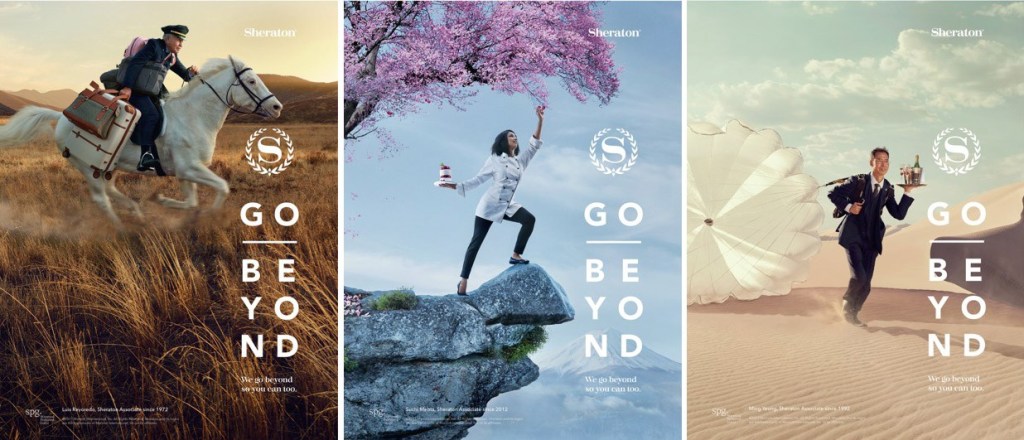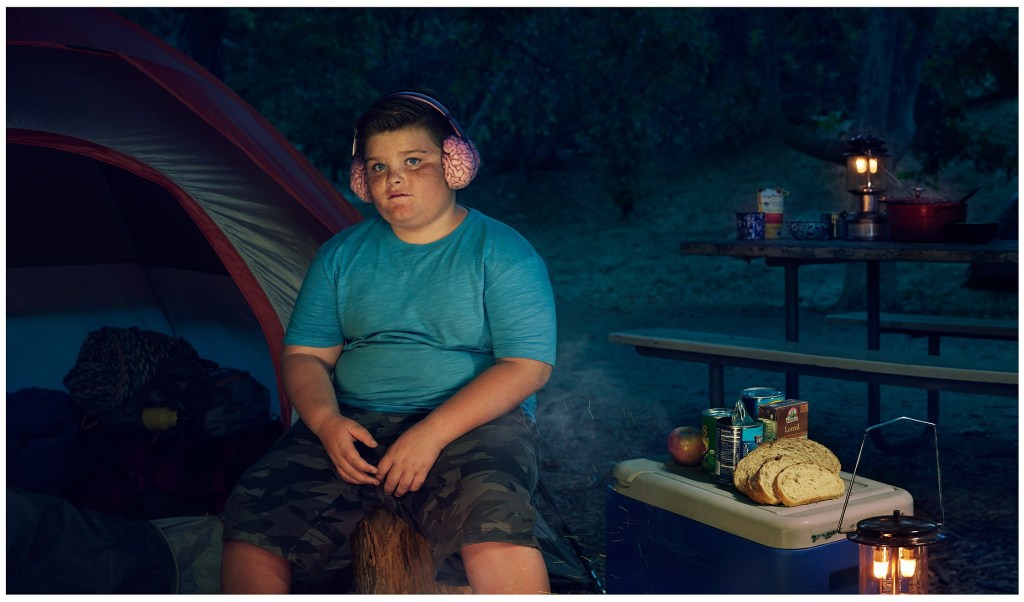In September 2016 my photography agents, Vaughn-Hannigan, abruptly closed their doors after 10 years in business, (writes US-based commercial photographer, Erik Almas). Since then I have been without an agent, representing myself, and I thought I would look back and ask the question which has been lingering with me through this time: to agent or not to agent?

After the news broke of Vaughn-Hannigan’s closure, there was a flurry of activity. Art Department, a major Photo Agency in New York, offered to take on all the VH photographers and some of the staff.
With a roster of 65 or so photographers, Art Dept is a big player and I was a bit reluctant to include myself in a group of that size. VH was the opposite of this with a boutique approach with a small roster of very distinct photographers. We all had different specialities, and since we were a collective of artists, I did feel we elevated each other rather than being competitors.
So I passed on the merger and met with a handful of agencies where I saw myself as a better fit. In the end, however, I decided not to jump into a new agent relationship right away and to give it all a good think. Over the past 18 years, I have only worked with two agents and I wanted to make sure my next partnership was the right one for the remainder of my career.
I also kept wondering why VH had shut their doors in the first place. Were they a casualty of marketing shifting away from traditional to digital media? VH was not the only photo rep to close shop, so more importantly; was it a sign that the agent model is not as relevant as it was before digital and social media?
I remember when I first started out in photography. I had moved halfway across the world, from Trondheim, Norway, to San Francisco, to study at the Academy of Art University. Four years in a learning environment flew by faster than one can imagine, and I vividly remember looking at my portfolio after graduation thinking: ‘Are these few images all I have to base my future on? Was this it? Was this how I would make a living?’
The idea of approaching magazines and advertising agencies saying ‘here are my pictures, will you hire me?’ felt daunting and had an almost paralysing effect on any forward action. So I got a job as a camera assistant, and I started infusing myself in the photo community. Here, the underlying consensus was that if you wanted to find work as a photographer, you had to have someone else handle this for you.
It meant finding an agent.
This was the late ’90s – there was no social media and websites had yet to become mainstream, and having an agent was indeed crucial. While photographers were out taking pictures, the agent would take their portfolios to advertising agencies and magazines, present the work, and essentially sell the photographers on their roster.
This direct sale approach, sending out marketing materials and being published in magazines and industry competitions, were the ways for a photographer to get noticed and hired. This is still happening today but to a very different degree.
How we absorb media is massively changing and as we spend increasingly more time on our phones. The places art directors and art buyers find photographers are different today than when I started out.

Life without an agent
In the weeks and months after the closing of Vaughn-Hannigan, layouts from advertising agencies with requests for estimates now came directly to me. This was a first in my career, but with great encouragement and help from my longtime producer, we dove in, engaging in the negotiations and estimating process that my agents would normally handle. In what was a case of indecisiveness around signing with a new agent and becoming busy with the work coming in, I decided to go it on my own for a year.
One year came and went, and suddenly the two year mark passed as well. It has now been almost three years, and with some time to reflect, I thought I again would ask the big question: to agent or not to agent?
The obvious benchmarks when comparing times with and without representation are revenue and profit. Did I make more or less? When averaging out the gross billings of the past few years, I did slightly less revenue in 2017 and then had one of the best years of my career in 2018.
So on average, the revenue of the past years without an agent is consistent with the years when I did.
But should the revenue still be equal now that I did not have an agent getting me jobs? Wouldn’t the assumption be that without an agent there would be a lot less work coming in?
With revenue in line with past years, my profits surged, as I did not pay the commission a photography agent charges. This has, for me, equalled a significant salary increase, and if you asked my bookkeeper who looks at numbers, she would not suggest getting another agent.
And she’s right; just looking at the revenue and profit benchmarks, one can loosely conclude that an agent is not needed at this stage in my career.

The full answer, however, is not so simple.
A good agent does a lot of work, and without representation, I am doing this job in addition to the other hats I am wearing while running the business of an advertising photographer. The truth is that I am doing less than an agent. I am doing the estimating and negotiating aspect of an agent’s job, but I am not doing the in-person agency visits or the marketing that a good agent consistently does.
To properly assess the effect of an agent we have to look backward and forwards. Looking back at the marketing and brand building that has been done in the past decade and looking forward at how to best continue this effort.
The past 15 years, I have consistently been marketing myself, building my brand. The past three years have shown that this long-term marketing effort has been well worth it as my business has continued to thrive without relying upon the support of an agent. I believe this stands as a testament to how important it is for photographers to do their own marketing and brand building, and to not rely upon an agent’s reputation and connections to land assignment work.

So with my long-term marketing efforts in place, do I need representation going forward? If I continue the consistent marketing I have been doing, will I be able to maintain the momentum, and more importantly, stay relevant?
My fear is that being my own agent is a long-tail scenario where I utilise fewer ways to market myself and that I gradually will lose market presence?

I have thought about this a lot, and I think the answer is less about the question of ‘do I need an agent or not’ and more the question ‘how do I best reach my potential clients in the current market?’
It has been fascinating to watch the rise of social media, its influencers and the currency that a large online following carries. Photographers now get hired, not just because of their craft, but also because of their own reach as a media channel to help sell the very product they get hired to photograph.
If one believes this trend will continue, which I do, photographers like myself who are marketing through the traditional channels will have to shift most of our focus into creating a solid online presence.
Having been a part of the advertising community for almost two decades, I clearly see the shift in how companies market themselves from ‘here’s our product’ to a narrative of what the company is about, what they believe in and ‘why they do what they do’.
We photographers very much need to do the same.
In reshaping and updating my branding effort, I want to share and partake in this expanded narrative of my brand. Rather than just showing my best images, I need to share why I so passionately like to create this work, the parts of me that are reflected in each picture I take, and the process I go through to ensure that each commercial assignment I take has the emotional honesty I seek in every one of my photographs.
This effort, however, is a part-time job in itself.
Still and motion come together
In my efforts producing great work for my clients, being my own agent and spending time with my young family, something had to give. That something was social media, and it has now been a year since I last posted on Instagram and two years since I shared a post on my blog. It has been a relief to leave social media alone. Unfortunately, it is not sustainable to leave it unused as a marketing channel.
This is where I need help. This type of brand building, however, is not in a traditional agents wheelhouse. It sits with managers and PR agencies.
This narrative shift in how brands market themselves, and the broader spectrum of media we now have, has created a different need for visual imagery. There are rarely assignments anymore where I just take still images. In the same shoot/production we now create digital assets like cinemagraphs and shoot TV commercials and films.
It has been a ton of fun to expand my understanding of visual narratives through films and TV spots, and I have been thriving in this multidisciplinary production scenario. Creating multiple visual interpretations of a client’s concept across several visual languages is where my forward focus lies.
To be able to create all these ‘assets’ with the same visual aesthetic across different mediums is of great value. I see it as one of the few places in advertising that offers great opportunities.
In the past, an agency would hire a photographer and commercial director separately. The result was largely two different visual aesthetics and two productions, making it neither cost-effective nor great brand coherency.
Today we are seeing more and more hybrid productions, but there is still not a big pool of photographers and directors who do both really well.
I have a lot to learn as a director, but use each opportunity I get to expand my experience to get closer to the few who are perfectly embedded in both the world of stills and motion.
The motion – or broadcast – side of advertising agencies, however, are not in the traditional photography agent’s wheelhouse. They sit largely with production companies that represent directors.
To Agent or Not to Agent?
An agent can be invaluable in a photographers’ career, and I am grateful for both the agent relationships I have had. Being a photographer is at times a solitary endeavour, and there is tremendous power in having a partner when navigating a professional career based on art.
Beyond the sales and marketing component, there is also a client services component. Sometimes I am my best agent. Other times I am not at all and have gotten in my own way when the relationship between the art and the contract negotiations get too close.
My advice to those starting out would be to do everything they can to get in with a great agent. The more ways that you can gain exposure in the market place the better, and an established agent can provide opportunities you won’t get on your own early on.
At the same time, you have to start building your brand in as many ways as possible. This is where the longevity of your career will be rooted.
As I am pondering the answer to my forever lingering question, I am still on the fence about having an agent or not. I need marketing and sales help for sure, so it is not that I don’t need an agent.
What I am unsure about is how the traditional agent fits with the two areas I believe will make a larger difference in my career going forward.
1. A continued push for me creatively into motion, working as a hybrid photographer and director crafting both stills and films with the same visual aesthetic.
2. A solid narrative-based branding on both websites and social media of who I am as a photographer and filmmaker and expanding the message from ‘here is what I do’ to ‘why I do what I do’.
I initially asked if the closing of VH is a sign that the agent model is not as relevant as it used to be, and the answer is yes.
Most photography agents don’t support the areas where I want to improve my relevance creatively and on the marketing side. I am sure they are seeing the changes and are contemplating the same as myself, but I have yet to see agents really shifting. I see them making up for their revenue loss by adding more photographers to their rosters, but I don’t see them shifting into the manager and brand building support role and taking on the production houses on the broadcast side of advertising.
With the belief that we only are in the early stages of the market shifting further to digital media, and possibly another case of indecisiveness, I have decided to give it another year without partnering with a new photography agent.
I’d like to see how the market continues to unfold and if I can keep as busy as I have been going it on my own.
I am also making a push to get representation on the film side. Following my own advice to photographers starting to seek a photo agent, I, as a fairly new director, would benefit greatly by being introduced to the broadcast world with the support of a well-known agent/production company.
I am also exploring the management approach. Bands and actors and other celebrities all have managers who will help shape and build careers. These management companies are now taking on photographers with massive social media followings and I am truly curious if this will shift into the traditional photographer agent model.
So to agent or not to agent? ‘Maybe next year‘ is my answer!
This is a live experiment and I am committed to exploring it on my own for another year.
– Erik Almas is a Norwegian-born US-based commercial and advertising photographer, who is increasingly directing and shooting video for his clients. You can see more of his work on his website. This post, republished with permission of the author, was originally published here.





Be First to Comment